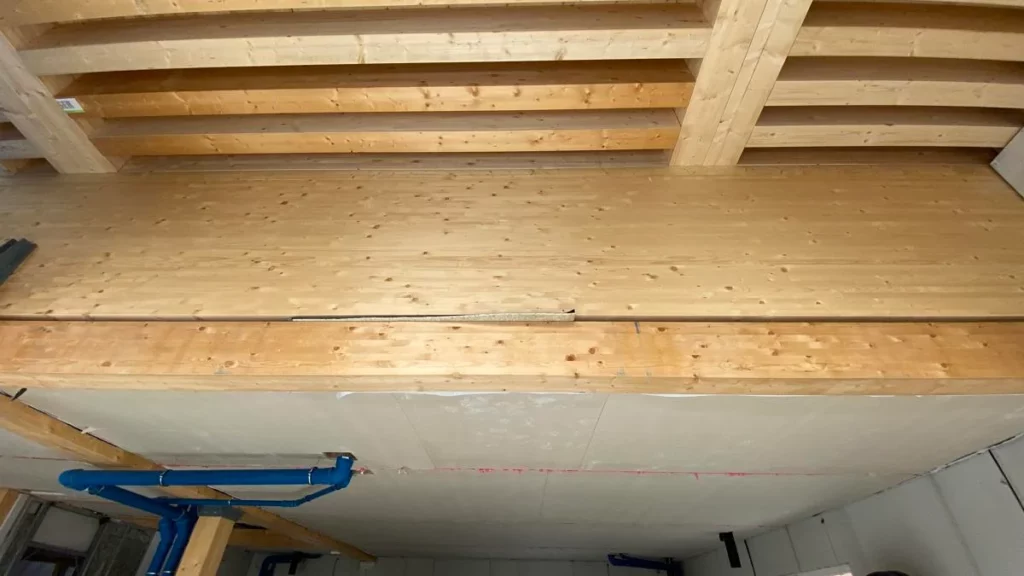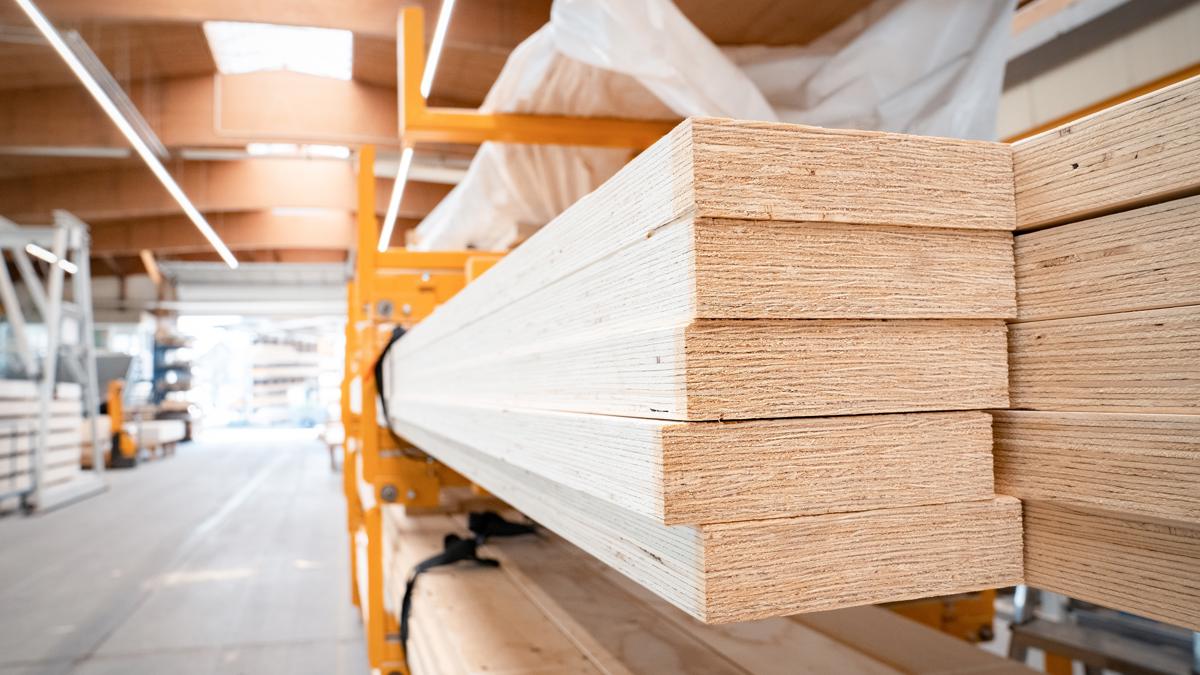In the world of construction, maximizing project success is a top priority for builders and contractors. One important factor that plays a significant role in achieving this success is the choice of materials used. LVL (Laminated Veneer Lumber) formwork timber is a versatile and cost-effective option that has gained popularity in recent years. Understanding the basics of LVL formwork timber and its benefits can help construction professionals make informed decisions and optimize project outcomes.
Understanding LVL Formwork Timber
LVL formwork timber is a type of engineered wood product that is made by bonding together thin layers of wood veneers with adhesives. This process creates a strong and stable material that is suitable for various construction applications, including concrete formwork. The advanced manufacturing techniques used in producing LVL formwork timber ensure consistent quality and reliability.
The Basics of LVL Formwork Timber
One of the key features of LVL formwork timber is its high strength-to-weight ratio. This means that it offers excellent load-bearing capabilities while being relatively lightweight. This makes it easier to handle on construction sites and reduces labor costs during installation.
But what exactly makes LVL formwork timber so strong? It’s all in the way it is engineered. The thin layers of wood veneers are carefully arranged and bonded together, creating a composite material that is stronger than solid wood. This innovative construction method ensures that the formwork can withstand the heavy loads and pressures exerted by the concrete.
Additionally, LVL formwork timber has low moisture content, which minimizes the risk of warping or shrinking. This ensures that the formwork maintains its shape and dimensions, providing a precise and accurate framework for concrete placement. It also means that the formwork can be used in a variety of weather conditions without compromising its structural integrity.

Benefits of Using LVL Formwork Timber
LVL formwork timber offers numerous benefits that contribute to project success. Firstly, its strength and durability make it suitable for supporting heavy loads, ensuring the structural integrity of the formwork system.
Furthermore, LVL formwork timber is highly resistant to moisture and chemicals commonly found in concrete, making it a reliable choice for long-term durability. Its smooth surface finish also allows for easy release of concrete, reducing the risk of surface defects. This means that the finished concrete structures will have a clean and flawless appearance.
Another advantage of LVL formwork timber is its environmental sustainability. Being made from sustainable and renewable wood sources, it is a more eco-friendly alternative to traditional timber or steel formwork options. By choosing LVL formwork timber, construction companies can contribute to reducing their carbon footprint and promoting a greener future.
Lastly, the cost-effectiveness of LVL formwork timber cannot be overlooked. Its long lifespan, resistance to damage, and ease of maintenance result in reduced replacement and repair costs over time. This makes it a wise investment for construction projects of all sizes.
So, whether you are constructing a residential building, a commercial complex, or an infrastructure project, LVL formwork timber is a reliable and efficient choice. Its strength, durability, and environmental benefits make it a preferred material among architects, engineers, and contractors alike.
Read more at: Comparing LVL Formwork to Traditional Timber Solutions
Key Factors in Maximizing Project Success
In addition to using LVL formwork timber, there are other key factors that contribute to project success. These factors include choosing the right materials, planning and design, and adherence to safety measures.
Another critical aspect to consider for maximizing project success is the skill and expertise of the construction team. A highly skilled workforce can significantly impact the efficiency and quality of the construction process. Their knowledge in handling materials like LVL formwork timber, along with their ability to troubleshoot and problem-solve on the spot, can ensure that the project stays on track and meets the required standards.
Choosing the Right Materials
When it comes to construction materials, making informed choices is crucial. Selecting high-quality materials that are suitable for the project requirements ensures a strong foundation and enhances the overall quality of the structure. LVL formwork timber, with its proven track record and advantageous properties, is a reliable and effective choice for many construction projects.
Moreover, considering sustainability aspects in material selection is increasingly becoming a priority in the construction industry. Opting for eco-friendly materials, such as sustainably sourced LVL formwork timber, not only reduces the environmental impact of the project but also aligns with green building standards and certifications.
Importance of Planning and Design
Proper planning and design are essential for project success. Thoroughly evaluating the project’s requirements, considering the load-bearing needs, and anticipating potential challenges allows for efficient utilization of LVL formwork timber. This helps in optimizing the construction process, reducing errors, and achieving desired outcomes.
Furthermore, incorporating innovative technologies like Building Information Modeling (BIM) in the planning and design phase can streamline communication and collaboration among project stakeholders. BIM enables a more integrated approach to construction, enhancing visualization of the project and facilitating better decision-making throughout the construction process.
The Role of LVL Formwork Timber in Construction
The structural advantages and cost-effectiveness of LVL formwork timber make it a valuable component in construction projects. Its wide availability and ease of customization allow for versatile applications in various types of buildings and structures.
When it comes to construction projects, the role of LVL (Laminated Veneer Lumber) formwork timber cannot be overstated. This engineered wood product is created by bonding together thin wood veneers with adhesives to form a strong and durable material. LVL formwork timber is known for its exceptional load-bearing capacity, making it ideal for supporting heavy loads during concrete pouring. Its reliable strength and stability ensure that the formwork can withstand the pressures exerted during the construction process, resulting in structurally sound buildings and structures.
Structural Advantages of LVL Formwork Timber
LVL formwork timber offers exceptional strength and stability, making it suitable for supporting heavy loads during concrete pouring. Its uniform structure and dimensional stability ensure precise formwork assembly, resulting in high-quality concrete elements. Additionally, LVL formwork timber’s resistance to warping or shrinking helps maintain the integrity of the formwork system throughout the construction process.
Moreover, LVL formwork timber is highly versatile and can be easily customized to fit the specific requirements of a project. Whether it’s for creating intricate architectural designs or simple structural components, LVL formwork timber can be tailored to meet the demands of different construction scenarios. This adaptability makes it a popular choice among builders and contractors looking for a reliable and efficient formwork solution. Learn more about reliable on https://www.stevenson.edu/online/about-us/news/how-to-identify-reliable-information/
Cost-effectiveness of LVL Formwork Timber
In addition to its structural benefits, LVL formwork timber also offers cost advantages. The lightweight nature of LVL formwork timber reduces transportation and installation costs. Moreover, its reusability, durability, and ease of maintenance contribute to overall cost savings over multiple projects.
Furthermore, the longevity of LVL formwork timber ensures that it can be used for numerous construction cycles, making it a sustainable and environmentally friendly choice. By investing in LVL formwork timber, construction companies can not only save costs in the short term but also promote eco-conscious building practices that benefit the planet in the long run.
Best Practices for Using LVL Formwork Timber
While LVL formwork timber offers numerous advantages, proper usage and maintenance are crucial for maximizing its benefits and ensuring safety on construction sites.
When it comes to utilizing LVL formwork timber, understanding its structural capabilities is key. Laminated Veneer Lumber (LVL) is known for its strength and durability, making it an ideal choice for supporting heavy loads during concrete pours. By following manufacturer guidelines and load specifications, construction teams can ensure the timber is used effectively and safely.

Safety Measures When Using LVL Formwork Timber
Construction sites can be hazardous, and adherence to safety measures is paramount. When using LVL formwork timber, it is important to provide adequate support, ensure proper alignment, and regularly inspect the formwork system to prevent accidents and protect workers.
Additionally, incorporating safety features such as guardrails and fall protection systems when working with elevated formwork structures is essential. Training workers on proper handling techniques and safety protocols can further reduce the risk of incidents and promote a secure working environment.
Maintenance and Care for LVL Formwork Timber
Regular maintenance and care are necessary to prolong the lifespan of LVL formwork timber. Proper storage, handling, and cleaning techniques ensure that the formwork remains in excellent condition and can be reused efficiently. Implementing preventive measures, such as applying appropriate coatings or sealants, protects the formwork timber from moisture or UV damage and extends its usability. Click here to read more about moisture.
Furthermore, conducting routine inspections for signs of wear and damage, such as cracks or delamination, allows for timely repairs or replacements, preventing structural issues during construction activities. By prioritizing maintenance efforts, construction teams can optimize the performance and longevity of LVL formwork timber, ultimately enhancing project outcomes.
Future Trends in LVL Formwork Timber Use
The construction industry is constantly evolving, and technological advancements and sustainability considerations are shaping the future of LVL formwork timber use.
Technological Advancements and LVL Formwork Timber
Advances in manufacturing techniques and computer-aided design (CAD) software enable the production of more complex and precise LVL formwork timber components. This facilitates the realization of intricate architectural designs and complex geometries, giving architects and engineers greater freedom in their creative visions.
For example, with the help of CAD software, architects can now design LVL formwork timber structures that have intricate patterns and shapes, which were previously difficult to achieve. These intricate designs not only enhance the aesthetic appeal of the structures but also provide functional benefits. For instance, the complex geometries can optimize the distribution of loads, resulting in more efficient and structurally sound buildings.
Sustainability and LVL Formwork Timber
As environmental concerns grow, the demand for sustainable construction practices is increasing. LVL formwork timber, with its renewable wood sources and minimal carbon footprint, aligns well with sustainable building principles. The use of LVL formwork timber not only helps reduce reliance on non-renewable materials but also contributes to better overall environmental performance in the construction industry.
Moreover, LVL formwork timber can be easily recycled or repurposed at the end of its life cycle. This means that instead of ending up in landfills, the timber can be used for other purposes, such as furniture or biomass fuel. By embracing the circular economy concept, LVL formwork timber contributes to a more sustainable and resource-efficient construction industry.
Furthermore, the sustainable nature of LVL formwork timber extends beyond its material properties. The manufacturing process of LVL formwork timber involves less energy consumption compared to other construction materials, further reducing its environmental impact. Additionally, the use of LVL formwork timber can help improve indoor air quality in buildings, as wood has natural air-purifying properties.
In conclusion, the future of LVL formwork timber use is promising, driven by technological advancements and sustainability considerations. The ability to create complex designs and the environmental benefits of LVL formwork timber make it an attractive choice for the construction industry. By embracing these future trends, builders and contractors can not only optimize project success but also contribute to a more sustainable and environmentally friendly built environment.

